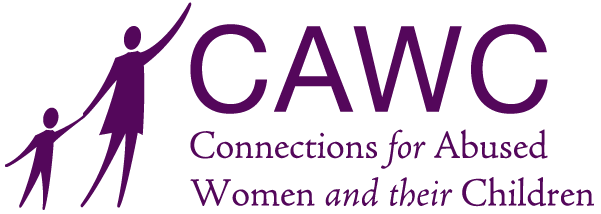Sexual Assault Awareness and Prevention Month (SAAPM), also known as Sexual Assault Awareness Month, is recognized every April in the United States as a time to raise public awareness about sexual violence and sexual assault prevention. Organizations, advocates, and communities come together to support survivors, promote education, and push for systemic change to reduce the prevalence of sexual assault.
What Is Sexual Assault Awareness and Prevention Month?
SAAPM began as a grassroots movement and has grown into a nationally recognized initiative. It is dedicated to increasing understanding of sexual violence, empowering individuals with prevention tools, and advocating for survivors’ rights.
The 2025 theme for SAAPM is “Together We Act. United We Change,” emphasizing the collective effort needed to address sexual violence. The campaign encourages communities, organizations, and individuals to take action through education, policy advocacy, and survivor support.
During SAAPM, organizations such as the Rape, Abuse & Incest National Network (RAINN), the National Sexual Violence Resource Center (NSVRC), and domestic violence services nonprofits such as Connections for Abused Women and Their Children (CAWC) host awareness campaigns, workshops, rallies or demonstrations, and fundraising activities. These efforts aim to create safer environments and reduce the stigma surrounding sexual violence survivors.
Key Facts About Sexual Assault in the US
Sexual violence is a widespread issue affecting people of all genders, ages, and backgrounds. Understanding the scope of the problem is essential for creating meaningful solutions.
Prevalence of Sexual Assault
- • Every 68 seconds, an American experiences sexual assault.
- • One in six women and one in 33 men in the US have been victims of attempted or completed rape in their lifetime.
- • 94% of women who experience rape or sexual assault report symptoms of post-traumatic stress disorder (PTSD) within two weeks.
Vulnerable Populations
Certain groups face a higher risk of sexual violence, including:
- • College students. Female students aged 18-24 are significantly more likely than other women to experience sexual violence.
- • LGBTQ+ individuals. Members of the LGBTQ+ community experience sexual violence at higher rates than their heterosexual peers.
- • Children and teenagers. One in nine girls and one in 20 boys under 18 experience sexual abuse or assault at the hands of an adult.
The Role of Perpetrators
- • The vast majority of sexual assaults are committed by someone the victim knows, such as a friend, acquaintance, coworker, or intimate partner.
- • Intimate partner violence can also involve reproductive coercion, in which the perpetrator seeks to control their partner by pressuring them into initiating or terminating a pregnancy.
- • Studies show that serial offenders often target multiple victims over time, reinforcing the need for comprehensive prevention measures.
Ways to Prevent Sexual Assault
Individuals, communities, and institutions can work together to prevent sexual violence and support survivors. Everyone can play a meaningful role in sexual violence awareness and prevention efforts.
Education and Awareness
- • Anyone can wear teal, the official color of SAAPM, during the month of April to show solidarity with survivors.
- • Parents, caregivers, and teachers can provide consent education at an early age to help children understand boundaries and respect for others.
- • College campuses and workplaces should implement sexual violence prevention programs and bystander intervention training. Many related programs are offered by nonprofits such as CAWC.
Bystander Intervention
- • Step up and speak out. If you witness harassment or a potentially dangerous situation, intervene safely by distracting, confronting, or getting help.
- • Support survivors. Believe and assist survivors rather than questioning or blaming them.
Strengthening Policies and Laws
- • Advocating for stronger Title IX protections in schools helps prevent sexual harassment and assault in educational settings.
- • Strengthening laws around sexual violence sentencing and reporting can help hold perpetrators accountable and reduce repeat offenses.
Providing Survivor Support
- • Sharing essential resources, including crisis hotlines operated by organizations such as RAINN (1-800-656-HOPE) and CAWC (773-278-4566).
- • Expanding access to rape crisis centers, medical services, and legal aid ensures survivors receive necessary care and justice.
- • Supporting CAWC or similar nonprofit organizations that provide essential services to sexual assault survivors is a powerful way to do your part. These services include not just emergency shelter but also holistic services that help survivors heal and rebuild their lives.
Together, we can create a culture where sexual violence is not tolerated and survivors receive the support they deserve.
Prevent Sexual Assault and Support Survivors With CAWC
At CAWC, we believe that everyone has a right to a life free from abuse and violence. Our mission to end domestic violence in all demographics is rooted in education, service, and advocacy. In addition to working toward broader social change, we provide empowerment-based and trauma-informed support in the form of shelter, counseling, and advocacy for individuals and their children affected by intimate partner violence.
If you or someone you know is actively experiencing the impacts of abuse or sexual violence, don’t hesitate to call our 24-hour hotline at 773-278-4566. For nonemergency support, reach out through our contact form today.
Want to help us protect more survivors and children? You can impact the life of a domestic violence survivor or a child who witnessed domestic violence by donating to CAWC today or by supporting our work in other ways.
